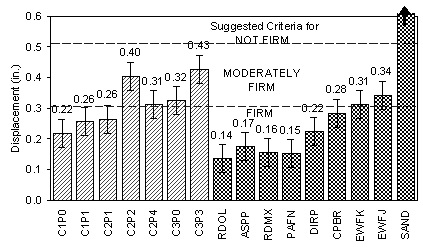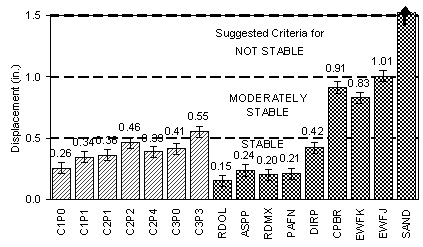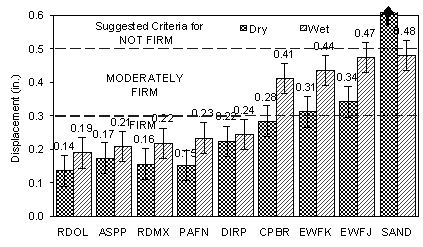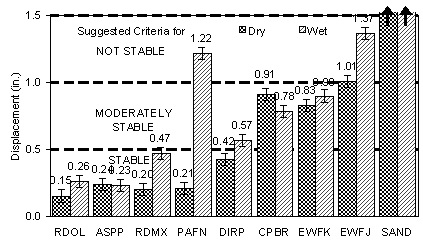Rotational Penetrometer Measurements of Firmness and Stability. The Rotational Penetrometer penetrated significantly more on the dirt (DIRP), chipped brush (CPBR), engineered wood fiber (EWFJ and EWFK), and sand (SAND) surfaces compared to the other exterior surfaces, indicating decreased firmness and stability (Figure 4, Figure 5). The results of the Rotational Penetrometer correlated with those of the Wheelchair Work Measurement Method.
All of the exterior surfaces, except sand, became less firm in wet conditions (Figure 6). All exterior surfaces, except chipped brush (CPBR), became less stable when wet (Figure 7). While engineered wood fiber K (EWFK) became only slightly less stable, engineered wood fiber J (EWFJ) and path fines (PAFN) became much less stable. Path fines without stabilizer and dirt, while stable in a dry condition, became unstable and moderately stable when wet, respectively.

Figure 4. Rotational Penetrometer Firmness Measurements

Figure 5. Rotational Penetrometer Stability Measurements

Figure 6. Rotational Penetrometer Firmness Measurements for Dry and Wet Surfaces

Figure 7. Rotational Penetrometer Stability Measurements for Dry and Wet Surfaces

User Comments/Questions
Add Comment/Question